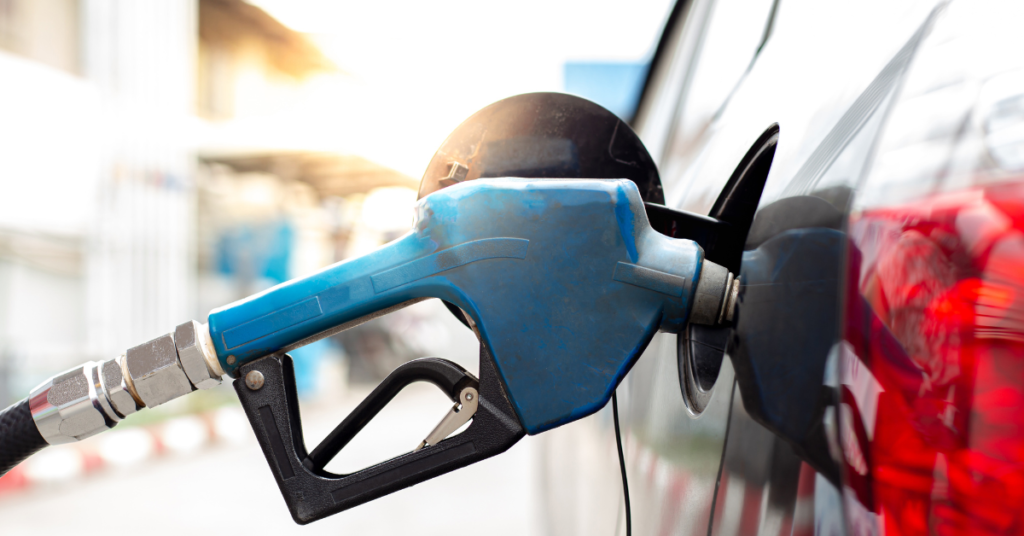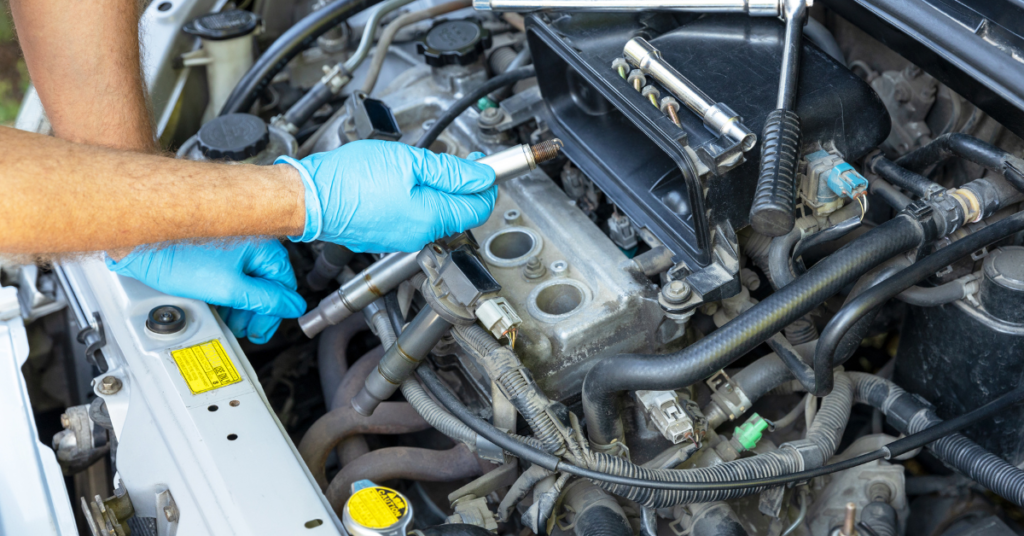
The P0430 Volvo code is a diagnostic trouble code (DTC) that may appear while using a Volvo vehicle. This code is specifically related to the exhaust system, particularly the catalytic converter efficiency of the engine bank that contains cylinder number one.
In this article, we will delve into the details of the P0430 code, its possible causes, symptoms, and potential solutions.
Contents
Understanding the P0430 Volvo Code
When the onboard diagnostics system of your Volvo detects a potential issue within the catalytic converter, it triggers the P0430 code. This code indicates that the efficiency of the catalytic converter in the engine bank with cylinder number one has fallen below the predetermined threshold.
The threshold is determined by the vehicle manufacturer and is programmed into the engine control module (ECM).
The catalytic converter plays a crucial role in reducing harmful emissions from the engine. It contains a honeycomb-like structure coated with catalysts that facilitate the conversion of toxic gases into less harmful substances.
When the catalytic converter’s efficiency drops below the threshold, it indicates that it is no longer effectively reducing emissions, which can lead to increased pollution levels.
Symptoms of P0430
In most cases, Volvo drivers may not notice any significant changes in the vehicle’s performance when the P0430 code is triggered. However, there are some common symptoms associated with this code that may indicate a potential issue with the catalytic converter:
Illuminated Check Engine Light (CEL)
The most obvious sign of a P0430 code is the illumination of the CEL on your Volvo’s dashboard. The CEL serves as a warning that there is a potential issue in the exhaust system that needs to be addressed.
Decreased Fuel Efficiency

A failing catalytic converter may result in decreased fuel efficiency. If you notice a sudden decrease in your Volvo’s gas mileage, it could be linked to the P0430 code.
This occurs because a less efficient catalytic converter cannot effectively convert harmful gases, leading to wasted fuel.
Poor Engine Performance
In some cases, the P0430 code can cause the engine to run rough or misfire. You might experience a lack of power or a noticeable decrease in acceleration.
This occurs because the catalytic converter’s reduced efficiency can disrupt the engine’s combustion process, leading to poor performance.
It is worth noting that while these symptoms are often associated with the P0430 code, they can also be signs of other underlying issues. Therefore, it is highly recommended to diagnose the problem accurately using a diagnostic scanner or seek professional assistance.
Common Causes of P0430
Several factors can lead to the triggering of the P0430 code in your Volvo. Understanding these causes can help you pinpoint the root issue and address it effectively. Some of the most common causes include:
Faulty Catalytic Converter
Over time, the internal honeycomb structure of the catalytic converter can deteriorate or become clogged, reducing its efficiency in reducing harmful emissions. A damaged or worn-out catalytic converter may trigger the P0430 code.
Oxygen Sensor Issues
The P0430 code can be caused by malfunctioning oxygen sensors, specifically the downstream oxygen sensor (sensor 2) located after the catalytic converter.
The sensor’s role is to monitor the efficiency of the catalytic converter. If the sensor provides inaccurate readings, it can trigger the P0430 code.
Exhaust Leaks
Leaks in the exhaust system before the catalytic converter can cause inaccurate readings from the oxygen sensors, leading to the P0430 code. These leaks can occur due to damaged gaskets, loose connections, or even holes in the exhaust pipes.
Engine Misfire
A misfiring engine can result in excessive unburned fuel entering the exhaust system, affecting the catalytic converter’s efficiency. This can be caused by issues such as faulty spark plugs, ignition coils, or fuel delivery problems.
Fuel System Problems
Issues with the fuel injectors, fuel pressure regulator, or fuel pump can disrupt the air-to-fuel ratio and contribute to the P0430 code.
If the fuel system is not delivering the proper amount of fuel to the engine, it can lead to inefficient combustion and increased emissions.
Diagnosing the P0430 Code
To accurately diagnose and address the P0430 code, it is recommended to follow these steps:
Retrieve the Code
Use an OBD-II scanner to retrieve the P0430 code and any other related codes. This information will help identify the affected bank and cylinder.
It is essential to note that the P0430 code specifically relates to the engine bank containing cylinder number one.
Visual Inspection
Perform a thorough visual inspection of the exhaust system, looking for any signs of damage, leaks, or loose connections. Examine the catalytic converter, exhaust pipes, and muffler for any visible issues.
Check the Oxygen Sensors
Inspect and test the oxygen sensors, paying particular attention to the downstream sensor. Use a multimeter or a dedicated diagnostic tool to measure the sensor’s voltage output and compare it to the manufacturer’s specifications.
Verify Catalytic Converter Efficiency
Use a digital multimeter or a dedicated diagnostic tool to measure the catalytic converter’s efficiency. This can be done by comparing the temperature readings before and after the catalytic converter.
A significant temperature difference indicates reduced efficiency.
Address Additional Issues: If any other related codes are present, diagnose and address those issues as well. It is crucial to ensure that all components of the exhaust system and fuel system are functioning correctly to prevent recurring P0430 codes.
Fixing the P0430 Code
Deciphering the P0430 code offers insights into a collective issue faced by car owners everywhere—a challenge involving the efficiency of the catalytic converter.
Once you have identified the underlying cause of the P0430 code, you can proceed with the necessary repairs. Here are some common solutions:
Replace the Catalytic Converter
If the catalytic converter is confirmed to be faulty, replacement is often the most effective solution. Ensure that you choose a high-quality catalytic converter compatible with your Volvo model.
Catalytic converters are available in different types, such as ceramic or metallic, so make sure to select the appropriate one.
Repair Exhaust Leaks
Any identified exhaust leaks should be fixed promptly. This may involve replacing gaskets, clamps, or even sections of the exhaust system. It is crucial to ensure that all connections are secure and there are no leaks that could affect the oxygen sensors’ readings.
Replace Oxygen Sensors
If the oxygen sensors are faulty or not functioning correctly, they should be replaced. It is advisable to replace both upstream and downstream sensors for optimal performance.
This ensures that accurate readings are provided to the ECM, allowing it to monitor the catalytic converter’s efficiency effectively.
Fix Engine Misfires

If an engine misfire is contributing to the P0430 code, it is crucial to diagnose and repair the underlying cause. This may involve replacing spark plugs, ignition coils, or addressing fuel delivery issues.
It is recommended to perform a thorough inspection of the ignition system and fuel system to identify and address any malfunctioning components.
Check Fuel System Components
Inspect and repair any issues with the fuel system, such as clogged injectors, a faulty fuel pressure regulator, or a failing fuel pump. Proper fuel delivery is essential for efficient combustion and optimal catalytic converter performance.
It is important to note that while some DIY fixes can resolve the P0430 code, certain repairs may require professional expertise. If you feel unsure or lack the necessary tools and knowledge, it is recommended to consult a qualified mechanic or Volvo dealership.
They have the experience and equipment to accurately diagnose and repair the issue, ensuring that your Volvo’s performance is restored.
Conclusion
The P0430 code in your Volvo indicates a potential issue with the catalytic converter’s efficiency in the engine bank containing cylinder number one.
While the symptoms may not be immediately noticeable, it is crucial to address this issue promptly to avoid further damage to your vehicle and to comply with emission regulations.
By accurately diagnosing and identifying the root cause, you can effectively resolve the P0430 code and restore your Volvo’s optimal performance.
Remember to follow the recommended diagnostic and repair steps, and don’t hesitate to seek professional assistance when needed.
FAQ
1. What is the P0430 code?
The P0430 code is a diagnostic trouble code that appears when the catalytic converter efficiency in the engine bank with cylinder number one falls below a predetermined threshold.
2. What are the symptoms of the P0430 code?
Common symptoms of the P0430 code include an illuminated Check Engine Light (CEL), decreased fuel efficiency, and poor engine performance.
3. What are the common causes of the P0430 code?
Some common causes of the P0430 code include a faulty catalytic converter, oxygen sensor issues, exhaust leaks, engine misfire, and fuel system problems.
4. How can I fix the P0430 code?
To fix the P0430 code, you can replace the catalytic converter if it is faulty, repair any exhaust leaks, replace oxygen sensors if necessary, fix engine misfires, and check and address issues with the fuel system.
It is recommended to consult a qualified mechanic or Volvo dealership for professional assistance if needed.



